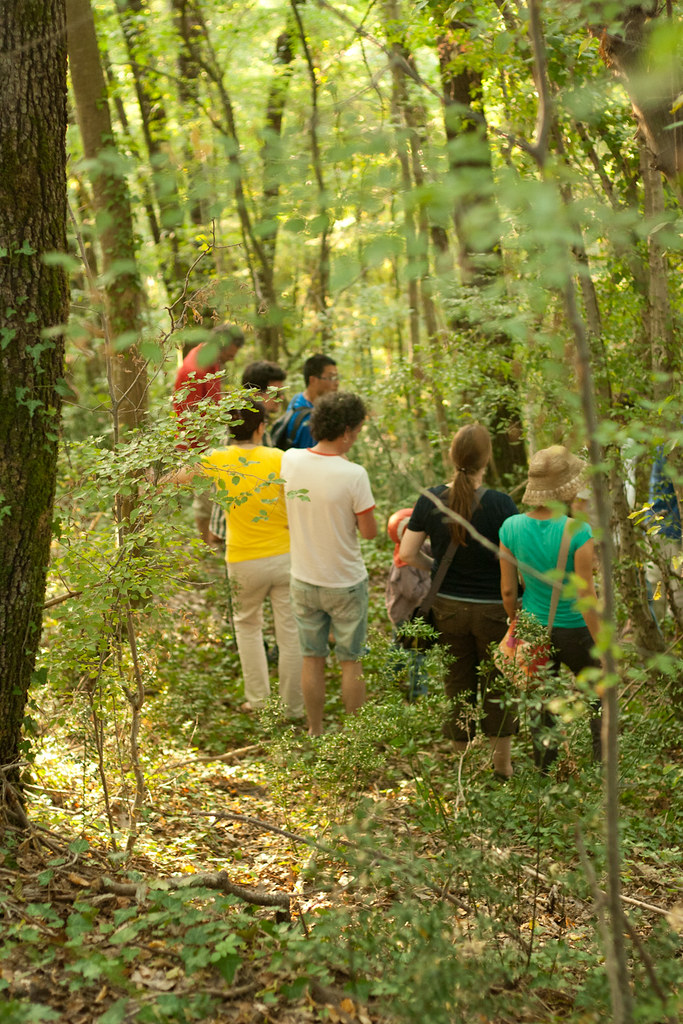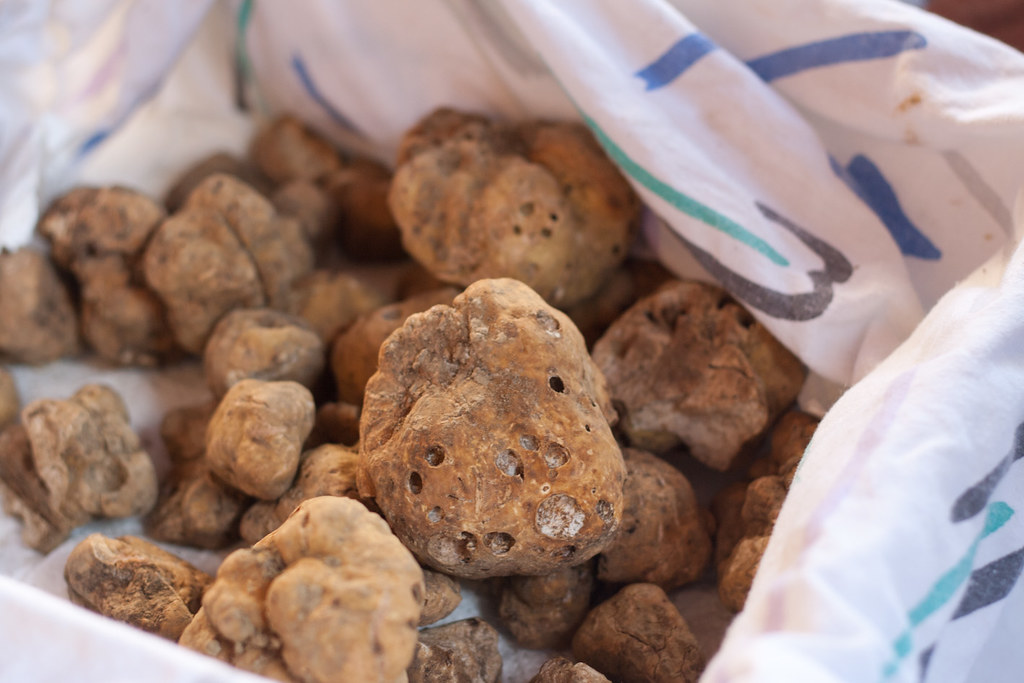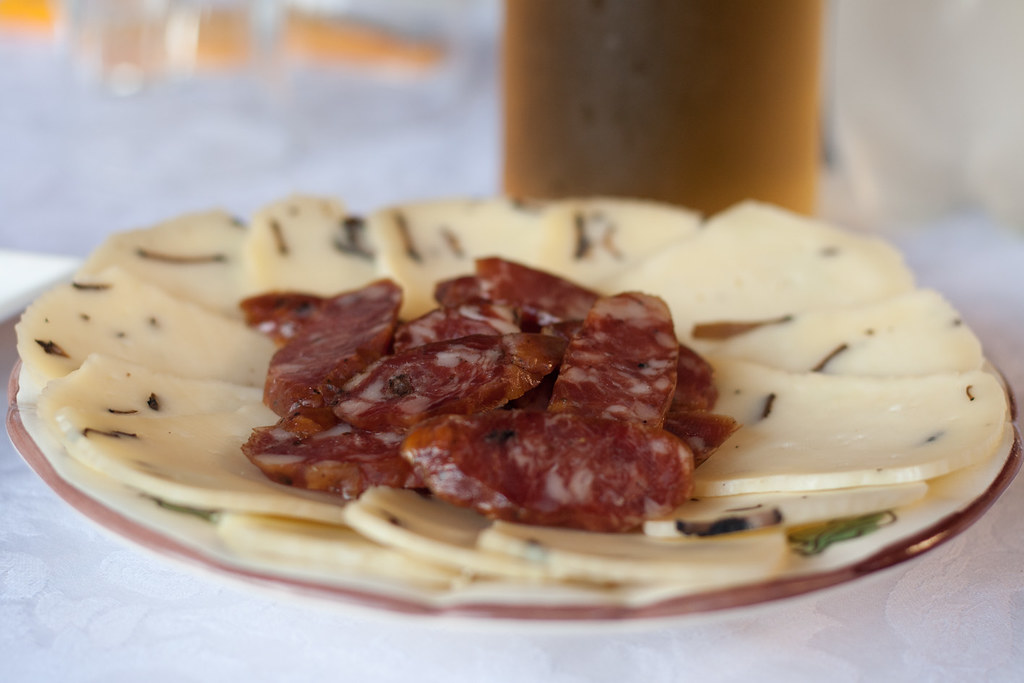Since I moved to my actual apartment (meaning, since I have a decent oven), I started baking bread regularly. Usually once a week, on the weekends when i have a bit more time. I always loved bread, but since I came to Germany I think I started appreciating all the different types of grains and flours they use so much here. In Portugal I have the feeling the white and rye bread are the staples, not varying much from there.
Anyways, since I started learning a bit more about making bread, I become curious about the different ways to bring more taste to it. I personally love rustic breads, specially with rye, and for me the normal bakers yeast was not working. So I read about the wonders of "cultivating" your own yeast, by making a starter, and the wonderful flavor that it brings to the bread. Basically what you do is just add some flour and water, leave it at room temperature renewing the ingredients every day, until you start seeing some "bubbling", meaning that your culture became active and you managed to trap the wild yeasts that are present in the flour.
In a wild yeast culture there is actually not only yeast but also bacteria. The bacteria metabolize sugars converting them to lactic acid or acetic acid, which brings up the sour flavor common in sourdough breads. The yeast produces carbon dioxide and alcohol which will help raise the bread, making it fluffy. The resulting flavor that the starter brings depends greatly on the different species of bacteria present, and that differs from place to place, with clima, etc. So my starter might have a very different taste from the one of someone else.
There are many different ways of making a starter (check the links in the end of the post). I based myself slightly in Peter Reinhart´s suggestions, but I prefer to make a 100% hydration starter, which means that I always feed it with it´s own weight in flour and water.
How I did it, in simple steps:
Day 1 - weight 100 gr of rye flour and 100 gr of water, mixed them well and place in a glass container covered but not tighten (to allow the excess gases to come out). Leave at room temperature for 24h.
Day 2 - Weight half of the previous mixture (should be 50 gr) and add the same weight of rye flour and water, mix and leave again until the next day.
Day 3 and so on - Repeat the same procedure, until you start seeing some bubbling in your culture, around 2 to 4 hours after "feeding it".
From now on you can either repeat everyday the same procedure (you can also increase the amount of flour and water so you have a bigger volume of starter to use) and leave it at room temperature, or you can place the culture in the fridge and reduce the feeding for once a week (less work, for the lazy people). Usually the longer you leave it in the fridge without feeding the more sour the taste will become, so you can play around with it to achieve your favorite flavors. Also you can use different flours to begin with starter. I personally found that with rye it was easier.
By the way, my starter´s name is
Schrödinger. I never know if he is dead or alive until I "open the box".
And then finally you can bake you first sourdough bread. The easiest recipe for bread with starter is using the 1:2:3 ratio. 1 time starter, 2 times water and 3 times flour. In this case I chose a spelt flour bread.
Sourdough spelt bread:
100 gr of 100% hydration starter
200 gr of water
150 gr of bread flour
150 gr of whole grain spelt flour
5 gr of salt
10 gr of sugar or 1 tablespoon of honey
Mix the different flours with the salt and sugar (if using honey, add it to the water first). Mix the water with the starter and add to the flour mixture. Using a mixer, mix the ingredients until they are well blended. Let the dough rest 30 minutes, and then knead it until elastic (you might need to add a bit more flour to work around the dough). Let it raise until double the size, about 1 hour (depending on the strength of your starter might take more or less time). Shape the dough to your liking (I usually place it in a rectangular bread form) and let it raise again for about 30 minutes. Bake at 200°C for the first 20 minutes and then reduce to 170°C for another 20-30 minutes.
Enjoy!
For more information:
http://www.thefreshloaf.com/node/9346/123-easy-formula-sourdough-bread
http://chocolateandzucchini.com/archives/2009/07/natural_starter_bread.php
http://www.hefe-und-mehr.de/en/2010/12/sauerteig-ansetzen/
































